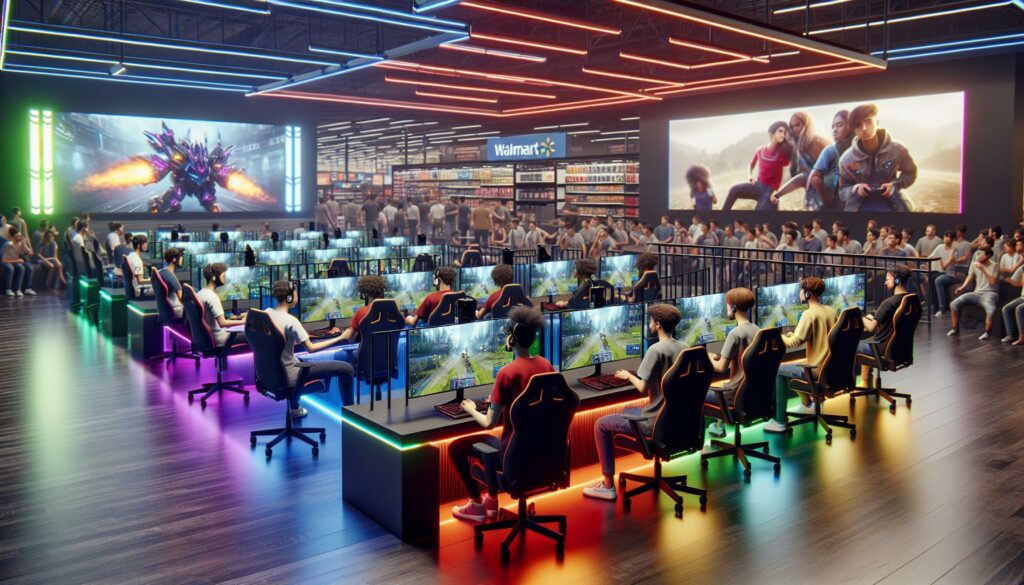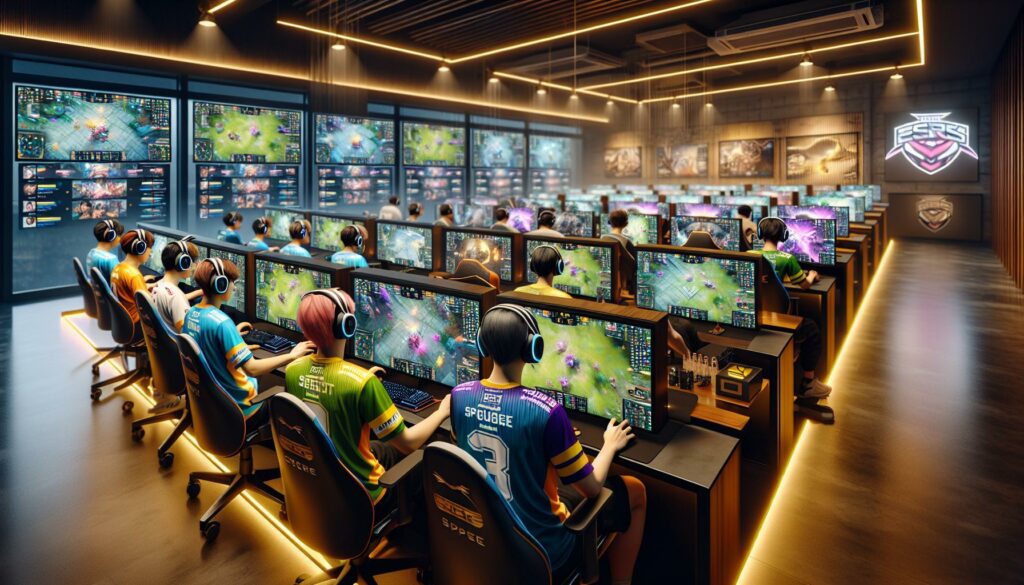Have you ever dreamed of competing in esports but weren’t sure where to start? I’ve discovered that UGC (United Gaming Clans) offers one of the most accessible paths into competitive gaming. As someone who’s been following the esports scene for years, I can tell you that UGC has become a cornerstone of amateur competitive gaming. UGC esports stands out by providing a structured competitive environment for games like Team Fortress 2, CS:GO, and Valorant. What I love most about this platform is how it bridges the gap between casual players and professional competition. It’s where aspiring gamers can test their skills, build teams, and potentially launch their esports careers without the intense pressure of major leagues.
- UGC Esports is a community-driven competitive gaming platform that connects amateur players with organized tournaments in games like Team Fortress 2, CS:GO, and Valorant
- The platform has grown significantly from 500 players in 2012 to over 50,000 registered users in 2023, offering three skill divisions: Steel (entry-level), Silver (mid-tier), and Platinum (top-level)
- Each competitive season runs for 8 weeks with structured playoffs, featuring specific match schedules, standardized formats, and prize pools ranging from $500 to $5,000 depending on the division
- Successful UGC teams maintain regular practice schedules (3-4 sessions weekly), establish clear communication protocols, and assign specific roles to team members
- UGC offers both digital recognition (medals, badges) and monetary rewards, distributing over $50,000 in prizes annually across different divisions
UGC Esports
UGC Esports operates as a community-driven competitive gaming platform connecting amateur players with organized tournament structures. It creates a bridge between casual gaming and professional esports through accessible leagues organized formats.
History and Evolution of UGC League
UGC League emerged in 2012 as a Team Fortress 2 competitive platform focused on North American players. The platform expanded its offerings in 2015 by incorporating CS:GO leagues followed by Valorant divisions in 2020. Throughout my research into UGC’s development, I’ve observed its growth from 500 active players in 2012 to over 50,000 registered users in 2023.
| Year | Milestone | Active Players |
|---|---|---|
| 2012 | TF2 Launch | 500 |
| 2015 | CS:GO Addition | 5,000 |
| 2020 | Valorant Integration | 25,000 |
| 2023 | Current Status | 50,000+ |
Game Formats and Divisions
UGC structures its competitions into three distinct skill tiers:
- Steel Division: Entry-level competition for newer teams
- Silver Division: Mid-tier matches for experienced players
- Platinum Division: Top-level competition featuring skilled veterans
Each game follows specific competitive formats:
- Team Fortress 2: 6v6 highlander matches
- CS:GO: Standard 5v5 competitive mode
- Valorant: 5v5 tactical gameplay
- Regular season: 8-week duration
- Playoffs: 3-week single elimination
- Championships: Best-of-three finals
How UGC Competitive Gaming Works
UGC’s competitive gaming structure operates through a systematic process of registration, team formation, and organized seasonal play. The platform uses a comprehensive matchmaking system that pairs players based on skill levels and competitive aspirations.
Registration and Team Formation
Players register on the UGC website by creating a profile linked to their game account credentials. The registration process includes:
- Completing a skill assessment questionnaire
- Selecting preferred roles within teams
- Indicating availability for match schedules
- Choosing between free agent status or team registration
Teams form through two primary methods:
- Creating a new team as a leader
- Recruiting 5-6 players for the main roster
- Designating 2-3 substitute players
- Assigning team roles and practice schedules
- Joining as a free agent
- Listing individual skills and experience
- Participating in team tryouts
- Accepting invitations from existing teams
Season Structure and Playoffs
The UGC competitive season follows a structured format with defined phases:
Regular Season:
- 8-week duration
- Weekly matches scheduled on specific days
- Best-of-one format for regular matches
- Point-based ranking system
Playoff Format:
- Top 8 teams qualify from each division
- Single elimination bracket system
- Best-of-three matches
- 3-week duration for completion
Match Requirements:
- 15-minute pre-match check-in
- Server selection based on team locations
- Official map pool rotation
- Match statistics recording for rankings
| Division | Teams | Matches/Week | Prize Pool |
|---|---|---|---|
| Steel | 64 | 32 | $500 |
| Silver | 48 | 24 | $1,000 |
| Platinum | 32 | 16 | $2,500 |
Popular Games in UGC Esports
UGC Esports supports multiple competitive gaming titles through its structured league system. Each game features distinct competitive formats tailored to their unique gameplay mechanics.
Team Fortress 2 Leagues
Team Fortress 2 remains UGC’s flagship title with 15,000 active players across three divisions. The competitive format follows a 6v6 structure for main leagues and Highlander (9v9) for specialty seasons. Teams compete in weekly matches featuring Control Point and King of the Hill game modes with specific map pools for each division:
- Steel Division: 5 starter maps (cp_badlands, cp_process, cp_snakewater)
- Silver Division: 7 rotation maps (includes cp_sunshine, cp_metalworks)
- Platinum Division: 9 competitive maps (adds cp_gullywash, koth_product)
Other Supported Game Titles
UGC’s game roster expanded strategically to include modern competitive titles:
- CS:GO
- 20,000 registered players
- 5v5 competitive format
- Map pool of 7 active duty maps
- 16-round first-half structure
- Valorant
- 15,000 active competitors
- 13-round format per half
- 7 map rotation system
| Game Title | Active Players | Teams per Division | Prize Pool (USD) |
|---|---|---|---|
| TF2 | 15,000 | 32 | $2,500 |
| CS:GO | 20,000 | 48 | $5,000 |
| Valorant | 15,000 | 40 | $3,500 |
Building a Successful UGC Team
A successful UGC esports team requires structured practice routines strategic preparation. Creating an effective team environment combines focused training schedules with strong interpersonal dynamics.
Practice Schedules and Strategies
Effective UGC teams maintain 3-4 weekly practice sessions lasting 2-3 hours each. Practice sessions include:
- Map analysis: 30 minutes studying common angles offensive setups defensive positions
- Aim training: 45 minutes of mechanical skill development through workshop maps aim trainers
- Scrimmage matches: 60 minutes against teams of similar skill levels
- VOD review: 30 minutes analyzing previous match recordings identifying mistakes adjustments
Teams schedule practices during peak hours (6 PM – 11 PM local time) to accommodate players’ work school commitments. Setting designated practice days (Monday Wednesday Friday) creates consistency accountability.
Communication and Teamwork
Clear communication protocols establish team cohesion performance standards:
- Discord channels:
- Strategy-discussion: sharing tactics setups
- Match-planning: coordinating schedules availability
- Team-feedback: constructive criticism improvements
- In-game callouts:
- Standard position names
- Enemy locations
- Utility usage coordination
- Health ammunition status
Team roles distribute responsibilities effectively:
- In-game leader: Shot-calling strategy adjustments
- Support players: Utility management team positioning
- Entry fraggers: Opening engagement execution
- Team captain: Administrative tasks practice organization
- Performance metrics
- Strategy updates
- Role adjustments
- Upcoming match preparation
UGC Tournament Prize Pools and Rewards
UGC’s reward structure combines digital recognition with monetary incentives across different competitive divisions. The platform distributes over $50,000 in prizes annually through its tournament seasons.
Medal System and Recognition
UGC awards digital medals to players based on their competitive achievements in each season. The medal system includes:
- Seasonal Division Medals: Bronze, Silver, Gold tiers for Steel, Silver, Platinum divisions
- Tournament Champion Medals: Special badges for first-place teams
- Achievement Medals: Recognition for MVP performances, clutch plays, or exceptional statistics
- Participation Medals: Awards for completing full seasons without forfeits
- Legacy Badges: Unique emblems for players with 5+ completed seasons
Monetary Prizes and Sponsorships
The monetary reward structure in UGC tournaments varies by division and game title:
| Division | TF2 Prize Pool | CS:GO Prize Pool | Valorant Prize Pool |
|---|---|---|---|
| Platinum | $3,000 | $5,000 | $4,000 |
| Silver | $1,500 | $2,500 | $2,000 |
| Steel | $500 | $1,000 | $750 |
- Equipment Partnerships: Gaming peripherals from Logitech, HyperX, Razer
- Platform Benefits: Premium subscriptions to FACEIT, ESEA, Discord Nitro
- Stream Integration: Revenue sharing from Twitch broadcasts
- Tournament Support: Server hosting by AWS, anti-cheat by EasyAntiCheat
- Community Rewards: Gift cards, game credits, exclusive in-game items
Growing the UGC Esports Community
UGC Esports fosters community growth through integrated content creation platforms and organized events. The platform connects 50,000 active members through multiple engagement channels, creating a vibrant ecosystem for competitive gaming enthusiasts.
Streaming and Content Creation
UGC’s streaming network features 1,000 partnered content creators who broadcast competitive matches live on Twitch and YouTube. Content creators receive dedicated support through the UGC Partner Program, including custom overlays, emote slots, and promotional opportunities. The platform’s content hub showcases:
- Match highlights from weekly tournaments across all divisions
- Educational content focusing on game mechanics and strategies
- Team spotlights featuring player interviews and behind-the-scenes footage
- VOD libraries containing 5,000+ archived competitive matches
- Weekly recap shows covering division standings and notable plays
Community Events and Meetups
UGC organizes 12 major community events annually, bringing players and fans together in physical locations across North America and Europe. The community calendar includes:
- Quarterly LAN tournaments with 250+ participants per event
- Regional meetups in 15 major cities featuring casual tournaments
- Annual UGC Convention gathering 2,000 community members
- Workshop sessions led by professional players and coaches
- Community-driven charity events raising $100,000+ annually
- Daily practice lobbies and pickup games
- Weekly community game nights
- Monthly town halls with UGC staff
- Team recruitment channels
- Strategy discussion forums
I firmly believe that UGC Esports stands as a vital bridge between casual gaming and professional competition. Its structured leagues diverse game offerings and robust community support make it an ideal starting point for aspiring esports competitors.
The platform’s success in fostering talent developing teams and creating meaningful competitive experiences proves its significant impact on the amateur esports scene. Whether you’re a beginner looking to test your skills or a seasoned player aiming for higher divisions UGC provides the perfect environment to grow.
The future looks bright for UGC Esports as it continues to expand its reach nurture talent and build stronger gaming communities. It’s clear that UGC will remain a cornerstone in shaping the next generation of esports competitors.



